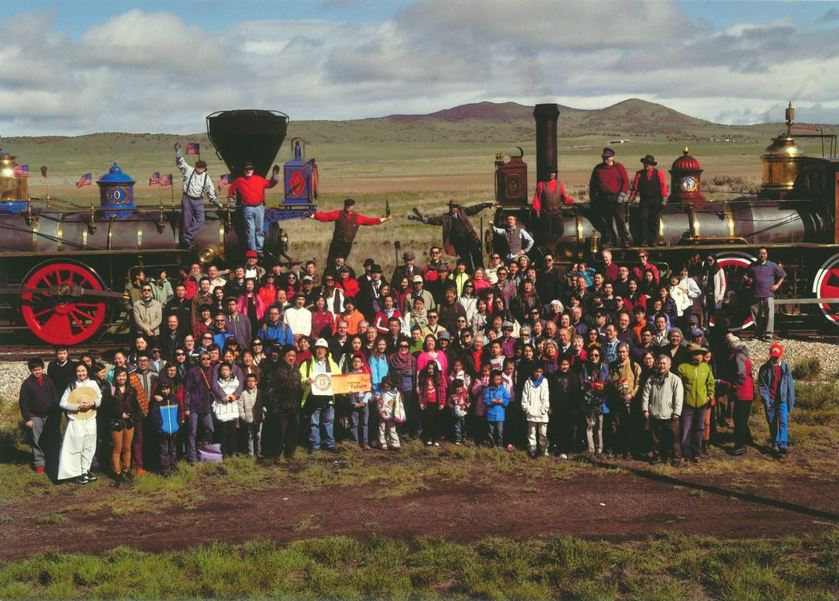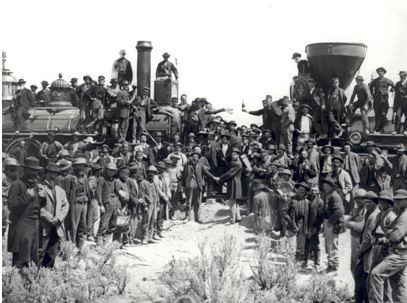|
| Group |
Round |
C/R |
Comment |
Date |
Image |
| 3 |
Dec 22 |
Comment |
Lovely shot. I think it's great when one can get such an effective image highlighting such a small object so perfectly.
I learned as a boy this was called The Old Moon In The New Moon's Arms. |
Dec 3rd |
1 comment - 0 replies for Group 3
|
| 11 |
Dec 22 |
Comment |
I like your subject and composition.
The rules of monochrome allow, I believe, for a single tone (other than black) to be the "mono-chrome". In this image, the color of the clay pots is so essential to the subject, I suggest you convert your original to a monochrome color exactly the same tone as the pots. This would not be much different that a deep sepia, commonly used for monochrome. After all, your original is almost monochrome already. |
Dec 15th |
1 comment - 0 replies for Group 11
|
| 20 |
Dec 22 |
Comment |
I am fascinated by your title of this interesting image. I can see the implied swirls of the two Yin-Yang halves in the stair composition, after you brought that out by cropping your original and applying the oval frame. And the guard stands at the location of one of the embedded dots. I guess you did not have the fortune to have a good focal point for the dot on the other side. Perhaps you might consider adding a person on the left? |
Dec 15th |
1 comment - 0 replies for Group 20
|
| 29 |
Dec 22 |
Comment |
This is a fine action photo, showing the faces of the horse and rider. I have a comment and a question.
Comment. I think the blur in the trees behind the horse's head might be a smudge on your lens. At 1/800th, I don't think a breeze would blur like that.
Question: About the equitation. My daughter is a rider, and competing in Hunt Seat, the riders lean quite far forward behind the horses' necks. Is this rider's position consistent with the other riders that went before? |
Dec 15th |
1 comment - 0 replies for Group 29
|
| 32 |
Dec 22 |
Reply |
Yes, removing the top basket would work well. Good idea. |
Dec 25th |
| 32 |
Dec 22 |
Comment |
I like everyone's comments so far, and now that I have seen them, here are some additional ideas.
1. Remove the eight or so little light dots.
2. Consider copying the right-hand vertical blade, copying it about 2/3 smaller and placing the copy in roughly the upper-center of the image.
3. Then go crazy and make another copy even smaller, and put it in the upper left. This would truly resemble the rows of a shark's teeth. |
Dec 19th |
| 32 |
Dec 22 |
Reply |
Yes, I think the closer crop is a good idea! |
Dec 11th |
| 32 |
Dec 22 |
Reply |
Thanks, so interesting. |
Dec 11th |
| 32 |
Dec 22 |
Comment |
Very dramatic shot. I like it both in color and monochrome, but your strong contrast in monochrome is the most dramatic.
As to things leaning, anytime you tilt a camera upwards, the parallel verticals will appear to converge towards the top. This is actually what your eye sees as well, but our brains tend to straighten this out in our heads. This is not a problem unless you are a commercial architectural photographer shooting a building for a client's sales brochure. |
Dec 9th |
| 32 |
Dec 22 |
Comment |
The wooded background gives a nice context, but I would consider seeing how you like this image if you crop it out and limit the image to just the patterns of the town. I am not recommending this, as I can't decide, only suggesting you consider which way you prefer. |
Dec 8th |
| 32 |
Dec 22 |
Comment |
I think this is a good compositional idea, and very good lighting differential as is. I would not darken the background any more. I like the framing with the leaves all around.
But I do have a number of comments to consider.
You asked about the leaves on the left. I do feel they are too complex, and draw attention away from the main blossom. Likewise there is a small stem between two main blossom petals on the right that also draws my eye.
I see you focused on the petals, but the stamen is out of focus, and that is perhaps a problem. |
Dec 7th |
| 32 |
Dec 22 |
Comment |
Just perfect, I can't add anything to the technique.
Compositionally, something like this often has a pair of old spectacles in the shot, but your "simple" assignment governs and keeping the number of items to a minimum was a good idea. |
Dec 7th |
| 32 |
Dec 22 |
Comment |
The Asian-American photographer, Corky Lee, passed away a couple of years ago. In his obit articles, one mentioned that he had photographed an Asian re-enactment of the same meeting. The original photograph had none of the Asian rail workers in it, and the re-enactment recognizes ex-post-facto that they existed and contributed huge numbers of laborers to the project. |
Dec 4th |
 |
| 32 |
Dec 22 |
Comment |
Very nice shot of a memorable and historic event.
Here is a back story about it. First, here is the first photograph of that meeting of the rail lines. Continue with my next comment afterwards. |
Dec 4th |
 |
| 32 |
Dec 22 |
Reply |
Oh, yes, what a good observation! Close-ups of familiar objects of course become abstract as they lose their context and only their form remains. |
Dec 2nd |
| 32 |
Dec 22 |
Reply |
Thank you, Wes. I guess this is "close-up." What do you think? |
Dec 1st |
7 comments - 5 replies for Group 32
|
| 47 |
Dec 22 |
Reply |
Oh, I think this is SO interesting. Whether it's a wall-hanger or for competition, it's great. It is totally the essence of the "form of a table and chairs" (Plato, by the way, discussed "forms"). Now that I look at it more, I see it as a triptych, of course, with the empty left and right sides somehow significant. I wondered about putting each chair alone in the left and right sections, but I am not sure that such a surrealistic composition would work visually. Of course it might make the viewers think about it. So many variations possible for such a profound composition. |
Dec 17th |
| 47 |
Dec 22 |
Reply |
Ha ha, I meant the cross-member of the chair, not the window structure, but interestingly, this is also a very fascinating variation! |
Dec 15th |
| 47 |
Dec 22 |
Comment |
This is a great job of seeing the idea, and making the image. And it is a beautiful image in its simple composition.
It reminds me of the classical philosophic question of "what is the form of a chair" or "what is chair-ness"? You have reduce the table and chairs to their most elemental forms: a table is a flat surface, capable of bearing objects on it, and usually between chairs. A chair is a seat with legs and a back, capable of bearing a person. To this end, I suggest taking out the floor-level cross-members of the chairs, and they are not required for chair-ness. |
Dec 14th |
1 comment - 2 replies for Group 47
|
| 67 |
Dec 22 |
Reply |
Great shot, and great story as usual, Larry.
About burying their prey, is it actually to let them rot (tastes better to them) or is it to make a cache for the future? |
Dec 13th |
0 comments - 1 reply for Group 67
|
| 73 |
Dec 22 |
Comment |
Great shot. I think the closer boat against the monochrome water surface is all you need in this image. |
Dec 13th |
1 comment - 0 replies for Group 73
|
| 74 |
Dec 22 |
Comment |
This is a very successful shot, in the style of Weston.
I recall reading about Weston's pepper. I hope I recall correctly that it was a 7-minute exposure and it was placed in a large aluminum funnel for background.
Of course, it has a humanoid similarity, and some may justifiably find it erotic. Have you even seen subsequent shots by others of female nudes posed to resemble peppers? I am serious. |
Dec 13th |
1 comment - 0 replies for Group 74
|
| 77 |
Dec 22 |
Comment |
Nice job telling the story with various elements. I enjoyed looking at this.
We have been to Oak Park, Taliesin West, and Falling Water. At Falling Water (to me it is the most famous small dwelling in the world), I stood in the living room and found my hands were trembling at the excitement of being there at last, something that had never before happened to me. |
Dec 13th |
1 comment - 0 replies for Group 77
|
| 78 |
Dec 22 |
Comment |
Great shot. It brings me back to our family visit there many years ago.
I prefer your original framing, not the cropped version, because it is consistent with Asian art that encompasses vast scenes but makes the human element very small. This says something about the relationship of humans to the vastness of nature. |
Dec 13th |
| 78 |
Dec 22 |
Comment |
Nice shot, per the discussion you have already had about it.
I find it deeply humorous, as some buckets are labelled "SAND" and some labelled "FIRE." What does this mean the "FIRE" buckets contain? But the two "SAND" buckets appear to have green plants sprouting out of them. Perhaps the "FIRE" buckets are not a fertile growing environment.
I looked up "GWR." For those not from your area, it is "Great Western Railway."
|
Dec 13th |
2 comments - 0 replies for Group 78
|
| 82 |
Dec 22 |
Reply |
Thank you so much. Truly interesting to learn about. |
Dec 13th |
| 82 |
Dec 22 |
Reply |
Fascinating! So in this wrestling style, it is a throw with the shoulders or back hitting the ground, and does not lead to a pin, as in the US college wrestling I did? Or is it followed with an attempt to pin? And has the thrown man "escaped" or is he still considered "under control"? Does any of this apply in this style of wrestling? |
Dec 13th |
| 82 |
Dec 22 |
Comment |
You caught a fascinating moment.
I have a question about the wrestling. It looks like the suplex wrestler does not have his opponent's arm captured, and the other wrestler is setting his hands to avoid having his shoulders hit the ground. Is that right? |
Dec 13th |
1 comment - 2 replies for Group 82
|
| 99 |
Dec 22 |
Comment |
This is a fine image, and I like the monochrome better than the color. But I think you need a different title, reflective of your explanatory story. How about just Difficult Times. |
Dec 2nd |
1 comment - 0 replies for Group 99
|
19 comments - 10 replies Total
|